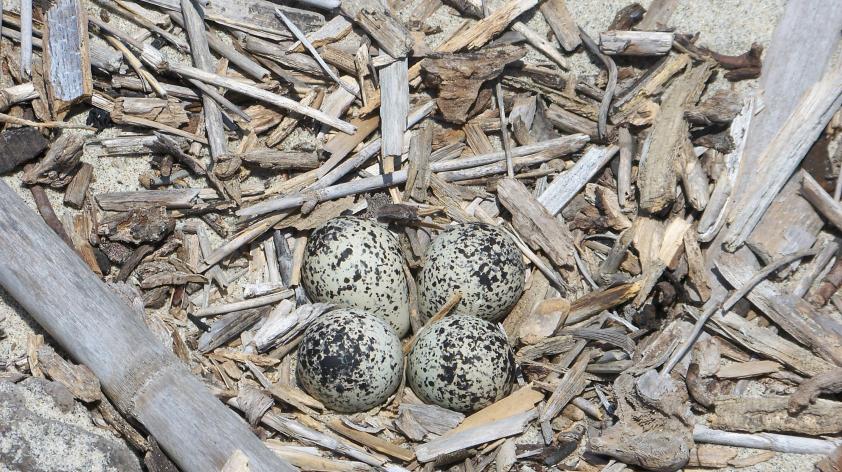
Nest Diversity on the Beach
While peering with binoculars through the salt-crusted windows of our trusty truck, I have plenty of opportunities to watch nature in action. Snapshots of snowy plovers in combat, sanderlings playing chase with the waves, an osprey perching on its log, and least terns flying back to shore carrying fish in their beaks, are all etched into my memory.
Marine Corps Base Camp Pendleton is a truly amazing place with acres of undeveloped land. The military base provides sanctuary to countless species of flora and fauna, and it is one of the few remaining sites with dune habitat in Southern California. These beaches are also the main breeding grounds for two federally-listed species we work with: the endangered California least tern and the threatened western snowy plover.
These important birds also share the beach with other avian species. Naming species is usually difficult for me, but being out here every day and watching the animals’ routines have made it easy for me to learn to identify many different birds. I remember the brown pelicans because of their effortless flight formations, the great blue herons due to their large footprints in the sand, the egrets as they stand regally in the water, and it is impossible to forget the Caspian tern after being dive-bombed by them!
During our long field days, we survey the dunes looking for cryptic nests and chicks for hours, and covering several miles per day. Life on the beach is sometimes mundane but has many exciting moments. We have stumbled across several nests of different avian species during our monitoring for terns and plovers. It has been interesting to compare the differences among the nest types.
For example, California least terns and western snowy plovers lay their eggs in shallow scrapes in the sand, while all the other nests we have seen (such as killdeer, horned larks, and mallards) usually have had more structure, and were woven and decorated.
Other than nest structure, there is also diversity in the number of eggs each species lays (the clutch size). Killdeer have nests with four eggs, and horned larks lay about three eggs. Ducks lay many eggs compared to the small clutches laid by the terns and plovers (one to three eggs). The duck nests are very striking because parents cover their eggs with their downy feathers for warmth and as camouflage! There was also a mother duck that became so accustomed to us that she remained on her nest as we meandered past.
My fondest memory of my time at Pendleton would be of the horned lark chicks. They remind me of an avian Benjamin Button. The chicks hatch out of these tiny eggs (about the size of a quarter or smaller) looking old and grumpy. These little guys grow surprisingly fast, too. One day they are about the size of a golf-ball and barely able to walk; two days later, they are running around and are as big as a lemon. I truly appreciate this opportunity to be so immersed in beach flora and fauna!
The Terns and Plovers Program based at the San Diego Zoo Institute for Conservation Research works on conserving coastal birds and their habitat. The team conducts research, breeding monitoring, and works with partners to develop management strategies to improve species recovery, with special focus on two federally-listed birds: California Least Terns and Western Snowy Plovers. Jie Yuen Ong worked as part of the San Diego Zoo Terns and Plovers field crew during the 2016 breeding season, mainly at Marine Corps Base Camp Pendleton. She is now completing her M. Sc. in ecology at Queen’s University in Ontario, Canada.













